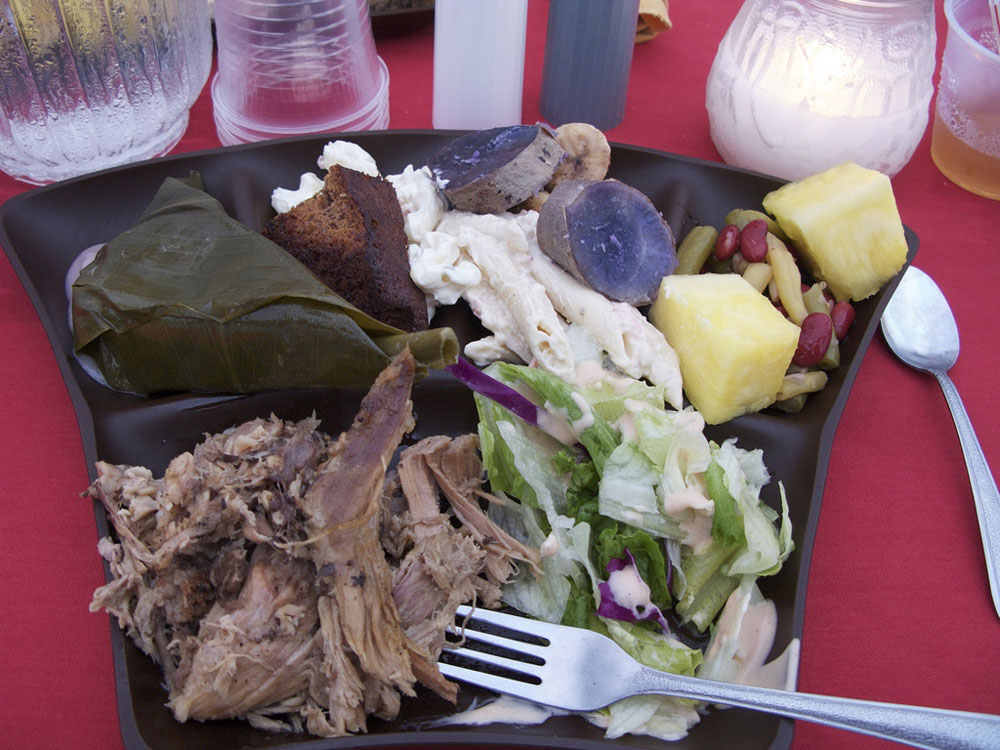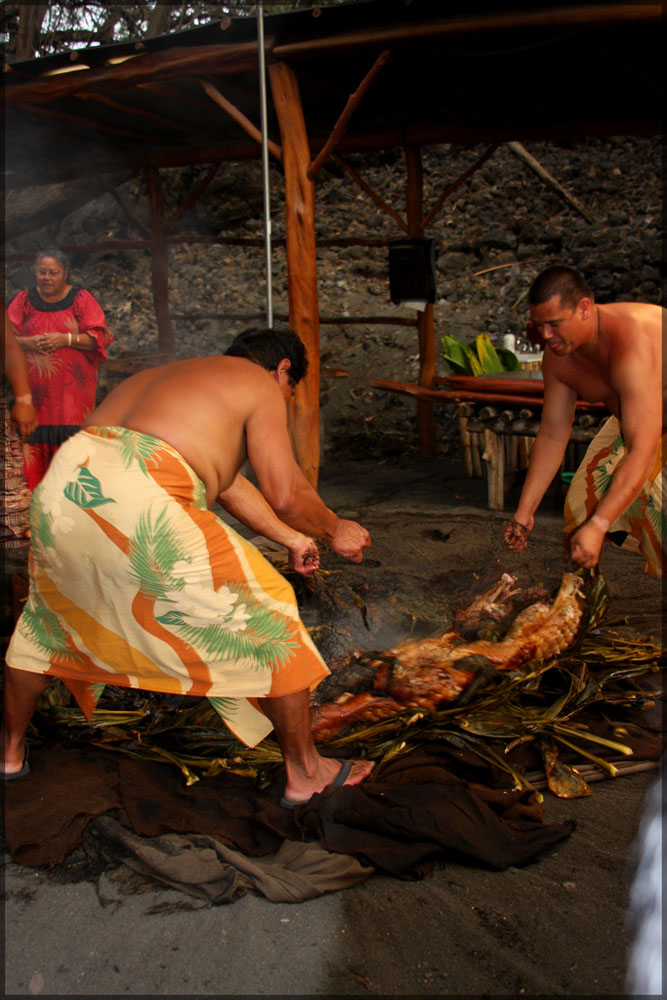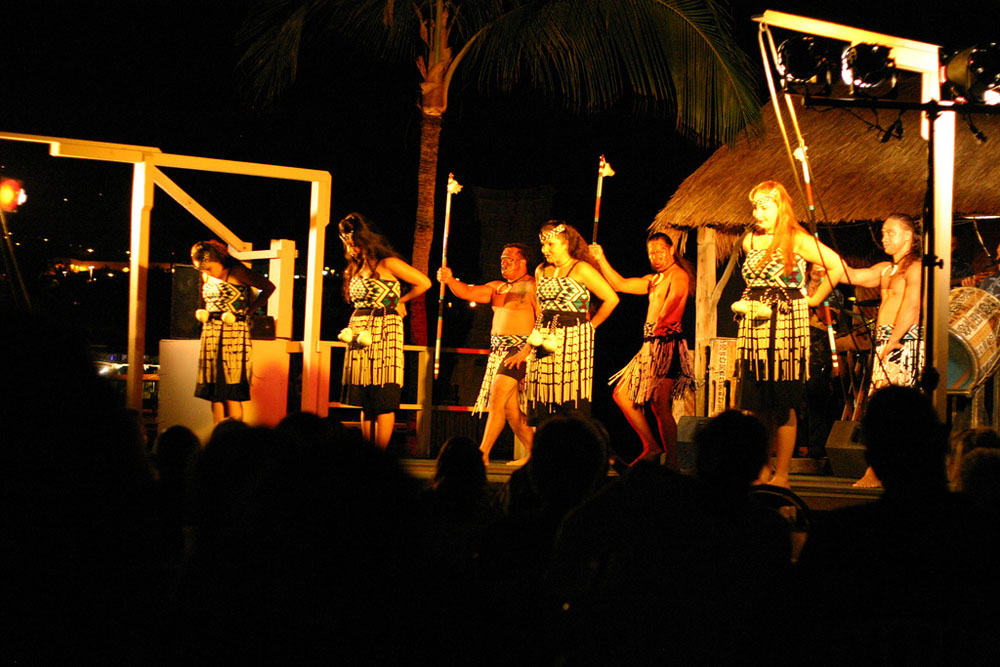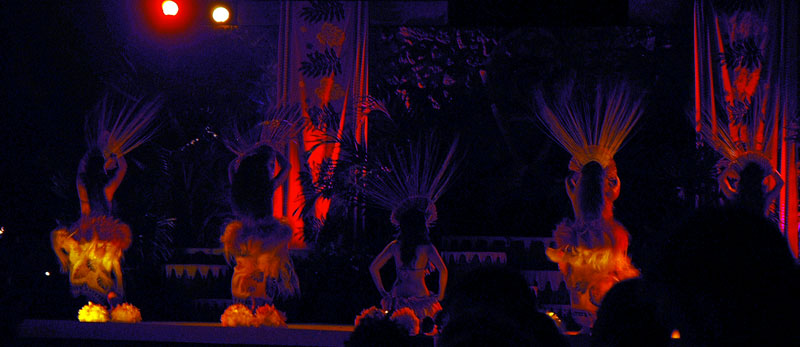Luaus have been a staple of Hawaiian culture for generations, but they’ve only caught on internationally in the last few decades. There’s no question that a trip to Hawaii would be incomplete without a Luau, and there’s no better place to sign up for one than the Big Island, where high authenticity and small crowds prevail.
There are several places to enjoy a Big Island Luau. Most of the venues are found on the west (Kona) coast and are attached to major resorts in South Kohala, Kailua-Kona and Keauhou. Out of all luaus on the island, the one at Kona Village gets the best press. It costs a few dollars more than its competitors but delivers a feast and performance that’s easily twice as good as anyone else’s.
The Luau Feast

Central to any Luau is the feast; and this is what separates an authentic Hawaiian luau from the Hawaiian-themed “luau parties” thrown back on the mainland. Most serve all-you-can-eat buffets, and a few offer family-style table service. As a general rule, Luau’s also include free drinks (including alcohol), though swankier venues like Kona Village stick to a cash bar.
The centerpiece of any luau is kalua pig, which is slow-cooked in an earthen oven (called an imu). The pig is placed in the oven in the morning, and the show usually begins with an imu ceremony that’s brimming with old-world Hawaiian regalia.

Along with the roast pork is an assortment of Hawaiian treats. Most luaus feature poi (a starchy staple made from taro root), poke, laulau (a medley of pork, butterfish and taro leaves) and haupia (coconut pudding). Most luaus also have plenty of less exotic choices to keep younger visitors happy.
The quality and authenticity of the food at a luau varies considerably, and diehard gourmands in search of serious Hawaiian cuisine will appreciate the quality that an extra 15 to 20 dollars affords. The same goes for the show that accompanies the feast.
The Luau Entertainment
After the imu ceremony is complete and the guests have started eating, the performance begins. Every luau on the Big Island features Polynesian dance, whether it’s the local variety or one of its more exotic cousins. The more affordable venues may have lackluster performances, but a few of these shows are not to be missed.

In most cases, the performance troupe will use traditional song, dance and storytelling techniques to relate the old Hawaiian myths. Stories are usually relayed through hula, a series of dance steps and chants that (to the disappointment of some) doesn’t involve a hoop. The stories are about ancient deities like Pele, the destroyer goddess of the volcano. Ancient Hawaiians believed she lived in the Big Island’s fuming Kilauea crater, and many of songs and dances revolve around her exploits.
Most of the venues draw on the traditions of other Polynesian islands to flesh out the entertainment. With this in mind, guests can expect to see crowd-pleasing fire-and-knife acts that take their cues from Samoan culture, or fast-paced dance routines from Tahiti.

Photos by: AZAdam, newlow, TimWilson, tinyfroglet
